Annyeong - haseyo (Hello) ! On the way back to China's New Year, I spent 64 hours in Korea. This short trip realized my girlish dream of wearing hanbok (Korean traditional dress). Korea has much in common with China and Japan due to frequent historical exchanges; but its culture still has a peculiar fascination on me since my girlhood. I love hanbok! I enjoy Korean traditional dancing! I even acquire one hanbok but never get chance to try. The dress came with me to America and quietly stay in the suitcase. Now I brought it from Chicago to Korea and for the first time I dressed up in Korean way.
Having a tight schedule, my trip focused on traditional architecture, food and clothing, plus snapshots of everyday life. Enjoy this photographic trip!
Traditional Architecture
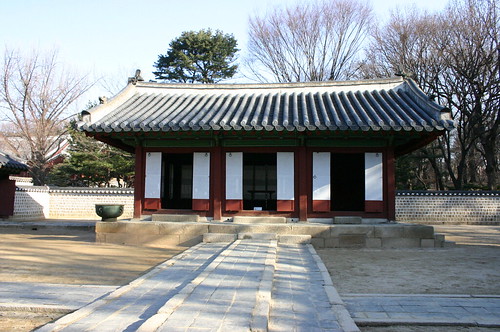
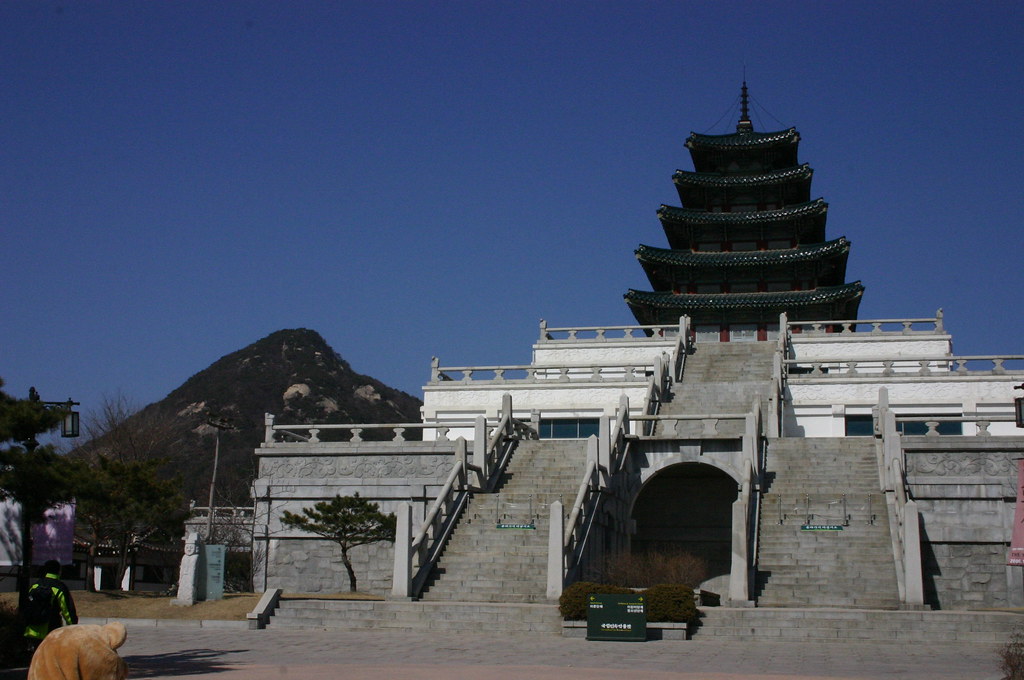
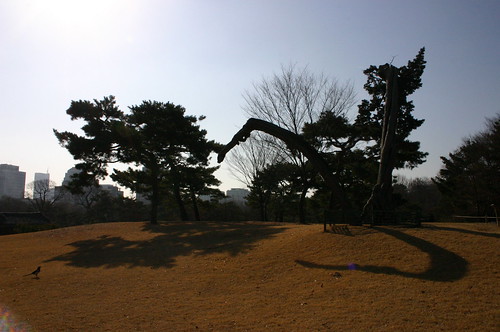
Royal Guard Changing Ceremony at Gyeongbokgung Palace.

Traditional Clothing
Dress for King and Queen (from National Folklore Museum of Korea).
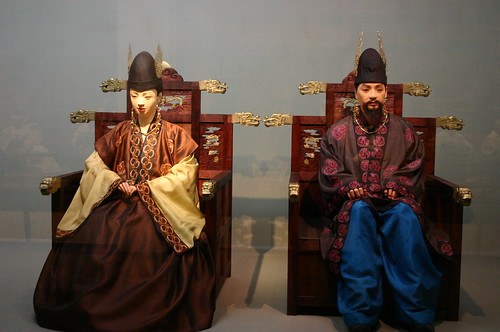
Folk Art
Children flying a Kite.
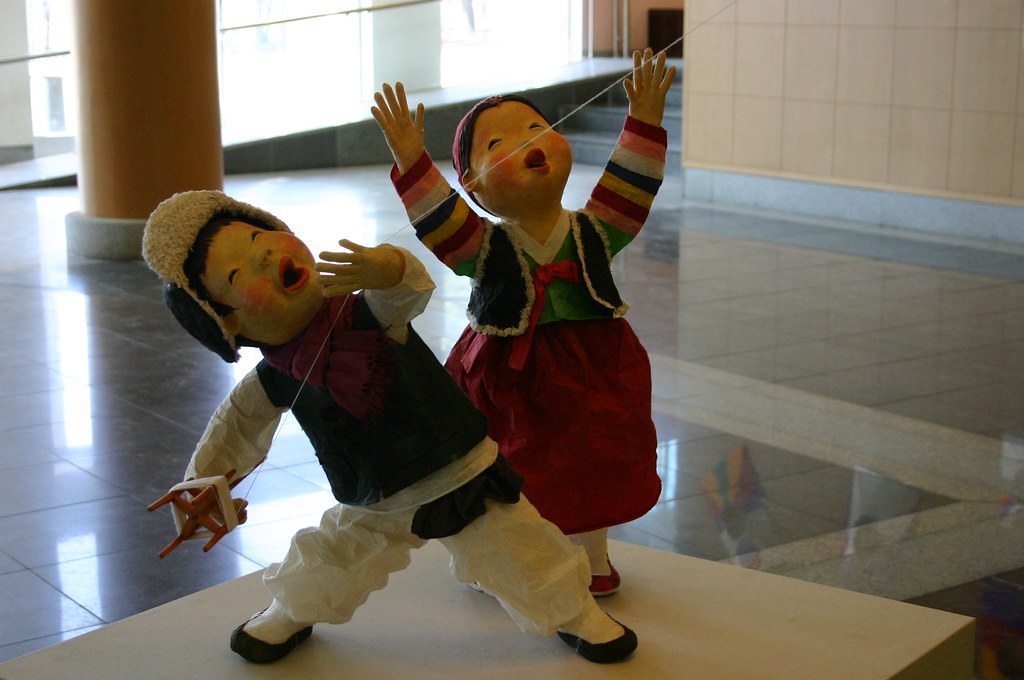
Wood Carving

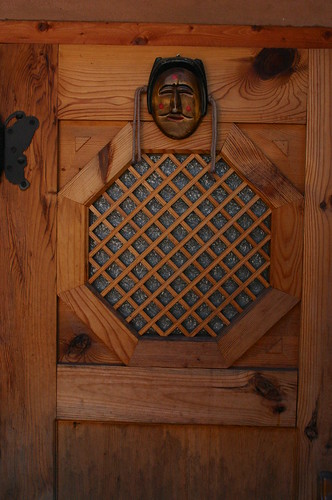
Jeju Island Stones.

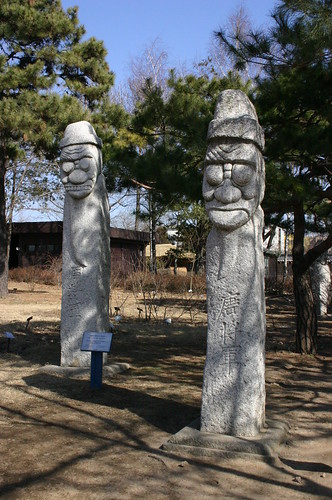
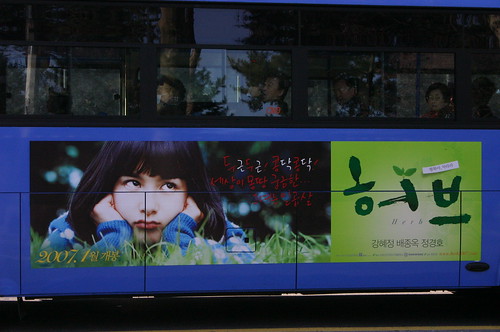
Korean Food
Sinseollo (casserole dish). Beef and radish, as well as sea cucumber, abalone, mushrooms, red peppers, walnuts, and ginkgo nuts are all boiled together creating a delightful casserole dish. This casserole is prepared in a chafing dish that has a hollow center with a charcoal fire that continually boils the food while you eat.
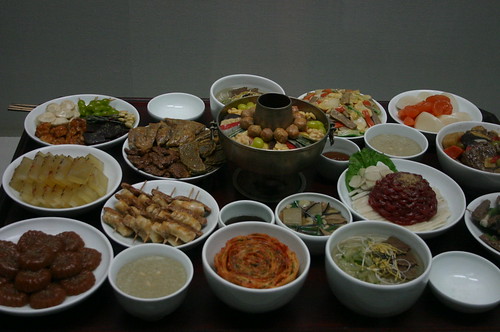
In Korea, there is a saying "gimjang (kimchi for winter use) is half of one's winter provisions." No matter how sumptuous a banquet may be, a banquet spread without kimchi is unimaginable.
Jennie's Breakfast in Seoul: rice, jeon and soup.
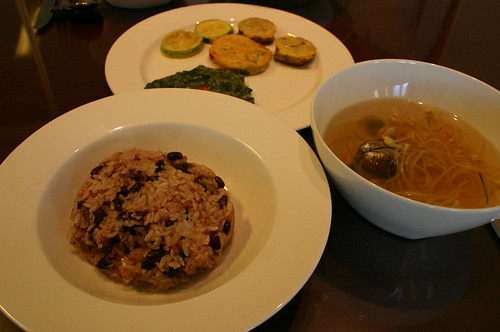
Boiled rice is the staple of Korean cuisine. Most people use sticky rice, which sometimes has beans, chestnuts, sorghum, red beans, barley or other cereals added for flavor and nutrition. Jeon is a kind of pancake made from mushrooms, pumpkin, slices of dried fish, oysters, unripe red peppers, meat or other ingredients which are mixed with salt and black pepper, dipped in flour and egg and fried in oil.
Jennie's Breakfast in Pusan
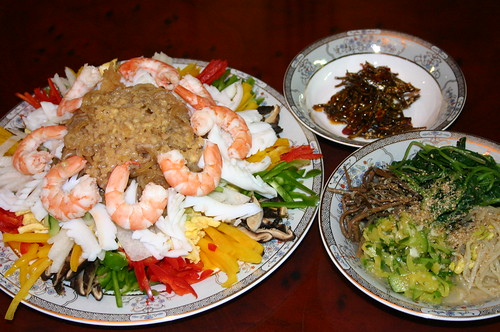
Jagalchi Market. Pusan is a port city. These boxes of fishes are right from ships.
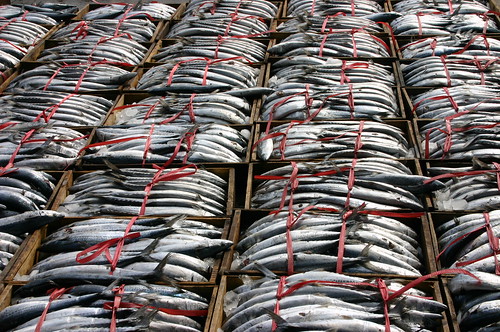
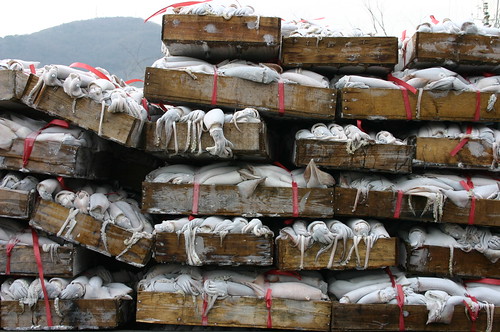
The Jagalchi Market is Korea's largest seafood market. Most of the people who sell fish are women, so the women who sell here are called 'Jagalchi Ajumma', 'ajumma' meaning middle-aged or married women. The Jagalchi Market is where you can see the lifestyle of the indigenous Pusan natives.
All types of shells.
Gamsahamnida (Thank You)!
Photographed by Jennie Bai.
Copyright ©Jennie Bai. All Rights Reserved.
(This article was originally written in the winter of 2007.)



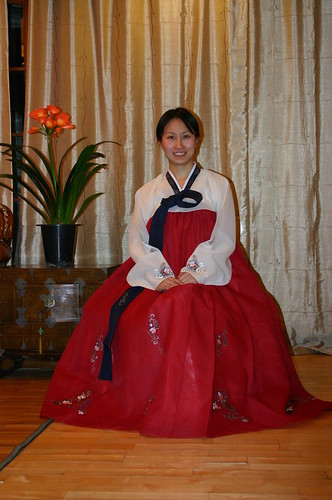
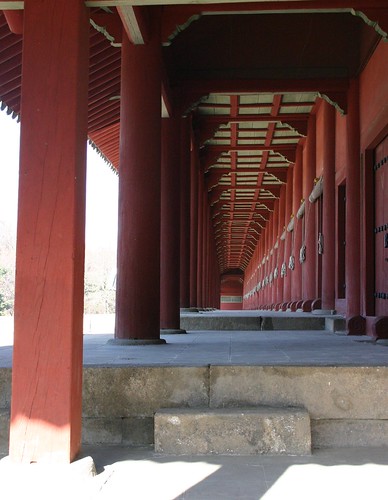
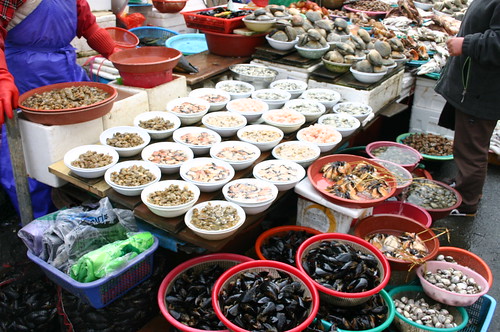

1 comment:
Interesting impression... May I share an article about the Singing Dong Tribe in http://stenote.blogspot.com/2017/12/the-singin-dong-tribe.html
Watch the video in youtube https://youtu.be/2GWQc1Aq3WE
Post a Comment